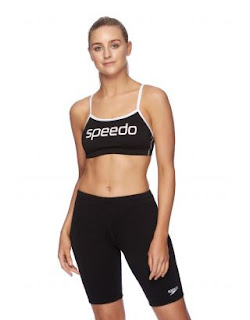How Good Swimwear and Swimwear Accessories Help You Swim Faster?
Humans are incredible. They have the ability to swim in water as well as fly in the air and walk on land. This is without a doubt an incredible collection of skills that we have been given. Swimming, at first, was important for man to secure his existence, and has become a highly popular leisure exercise.
Though mostly recreational in nature, it is also regarded as one of the finest cardio activities we can do to maintain good health. Many swimmers also don unique attire that differs significantly from what most people wear on a daily basis when they swim. But why does she have this strange behaviour? Animals just use their natural hair, skin, or scales when they swim, not any extra clothes or material. Swimming suits are basically made to safeguard your dignity and improve your swimming technique. Drag is the primary obstacle that must be overcome when travelling through water. Drag is a constant, yet in the air, walking or running may easily overcome it.
When swimmers try to push through the water, it essentially pushes back on them. In addition, a little wave (called a bow wave) is created in front of the swimmer, increasing drag. Even standard swimsuits, aside from the really high tech solutions developed by different brands like speedo race suits, can enhance swimmer performance in the water. The lactic acid buildup in your muscles might be lessened by the tightness of swimwear. When you engage in an aerobic activity like swimming, the major cause of your muscles feeling fatigued or developing a stitch is lactic acid.
However, swimwear is far more versatile than that. The majority of high-quality ones are created using specifically formulated components that offer modest but considerable advantages over less costly alternatives. Today's swimsuits are often constructed of nylon or spandex. Both of these synthetic fibres are hydrophobic by nature and aid in making the suit tight. This quality makes them water-resistant, which can up to 8% lessen the effects of drag. By effectively repelling water away from them, they let swimmers more easily "cut" through bodies of water. Additionally, their seams were created specifically to increase swimming effectiveness. It might be quite important how the materials are kept together in the finished garment.
Seams that are bonded rather than stitched can aid to minimise drag by up to 6%. Pretty outstanding. Even a fraction of a second can be the difference between a gold and silver medal in competitive swimming competitions like the Olympics. The equipment a swimmer uses can provide them a major advantage in addition to their level of fitness and technique, which are of vital significance. Their usage in elite swimming competitions has been virtually outlawed by FINA (the International Federation of Swimming). It is always advised that a professional swimmer should always get fina approved swimwear to avoid any restrictions during the competition.
The official FINA regulations are quite rigid when it comes to what may, and cannot be worn during competition. Men's torsos and lower legs must be exposed, and swimwear must be constructed of woven materials. Nowadays, the majority of male swimmers will don jammers, which are form-fitting swim shorts.
These swimming costumes extend from the swimmer's waist to just above the knee. On its website, FINA provides a manufacturer and style breakdown of the authorised suits. Only in open-water competitions are swimmers permitted to wear full-body suits.
Women's suits are prohibited from covering the neck, extending past the shoulders, or falling below the knee. In both situations, they must not, primarily but not only because of the suit's cut, violate morals or good taste.
Visit for more information, https://www.swimwearshack.com.au/




Comments
Post a Comment